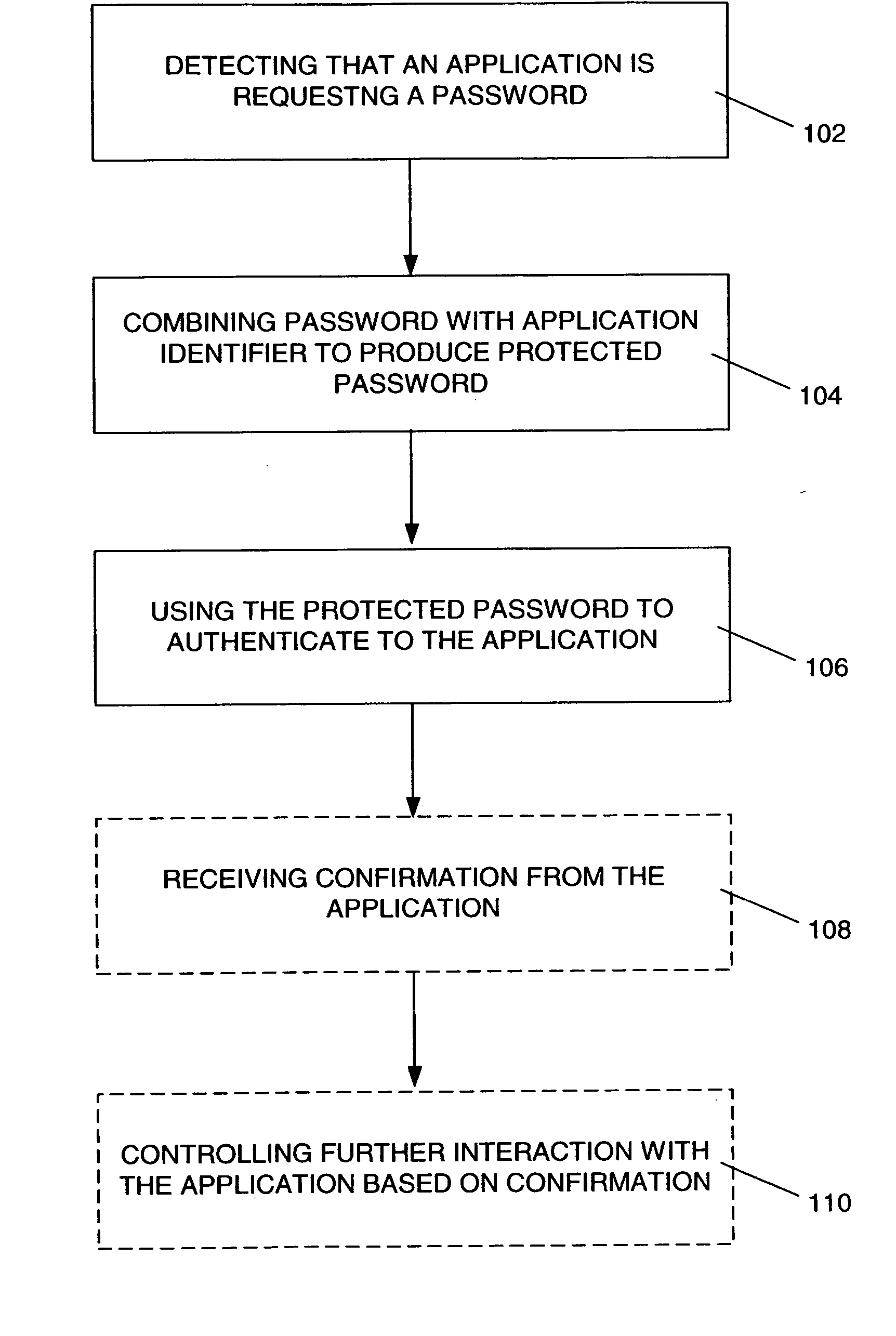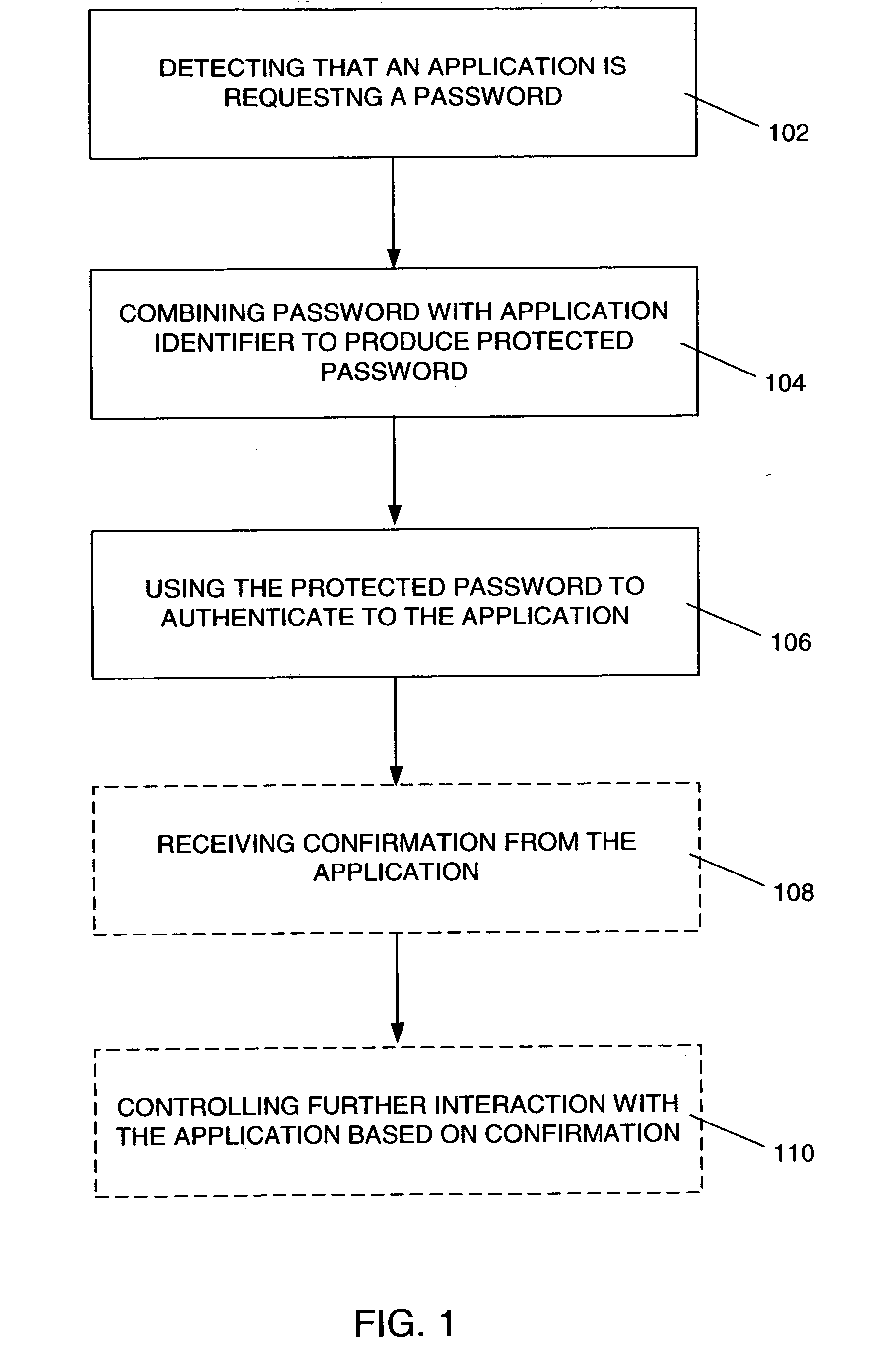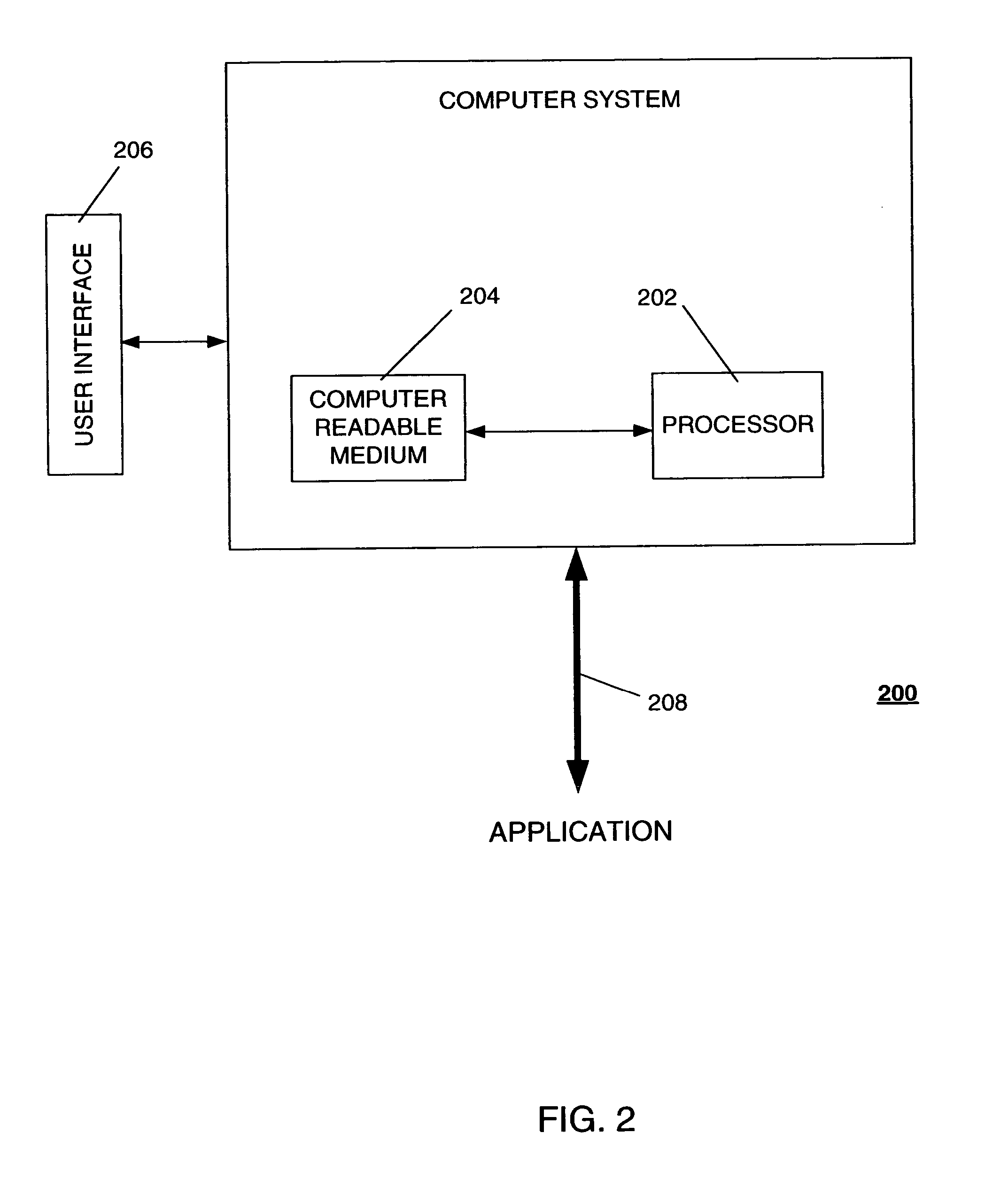Password-protection module
- Summary
- Abstract
- Description
- Claims
- Application Information
AI Technical Summary
Benefits of technology
Problems solved by technology
Method used
Image
Examples
Embodiment Construction
[0026] One embodiment of a password-protection module is a method comprising the following steps, as shown in FIG. 1: [0027] 1. Detecting 102 that an application is requesting a password (or a passphrase) from a user. [0028] 2. Combining 104 the password with a value identifying the application and potentially other information to produce a protected password. [0029] 3. Using the protected password to authenticate 106 to the application.
[0030] The application then verifies whether the protected password is correct. Examples of applications to which this embodiment may be applied include Web-based services, such as on-line merchants and portals, desktop-based applications, such as virtual private network (VPN) or wireless LAN clients, and traditional client-server applications, among others; as well as applications running on a device (e.g., smart card, security token) connected to the user's computer.
[0031] Other embodiments may also perform the following two additional steps: [00...
PUM
 Login to View More
Login to View More Abstract
Description
Claims
Application Information
 Login to View More
Login to View More - R&D
- Intellectual Property
- Life Sciences
- Materials
- Tech Scout
- Unparalleled Data Quality
- Higher Quality Content
- 60% Fewer Hallucinations
Browse by: Latest US Patents, China's latest patents, Technical Efficacy Thesaurus, Application Domain, Technology Topic, Popular Technical Reports.
© 2025 PatSnap. All rights reserved.Legal|Privacy policy|Modern Slavery Act Transparency Statement|Sitemap|About US| Contact US: help@patsnap.com



